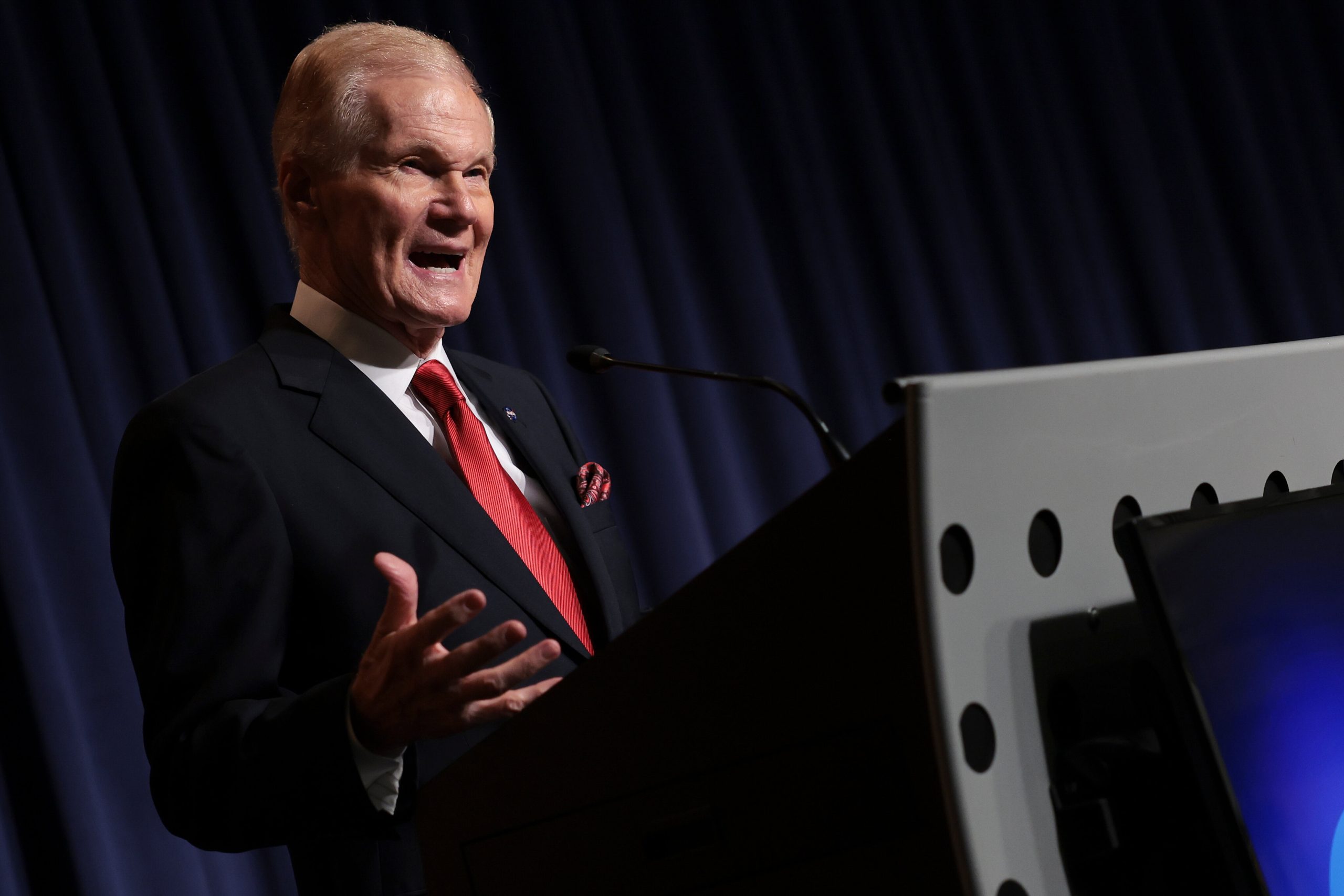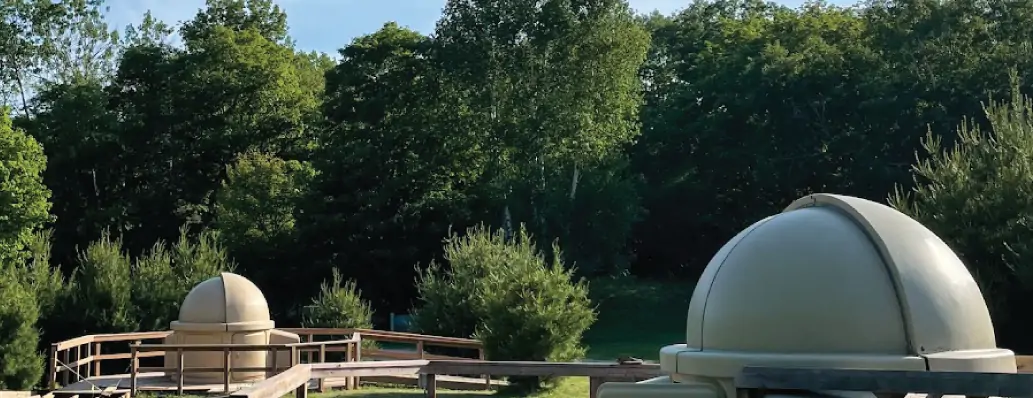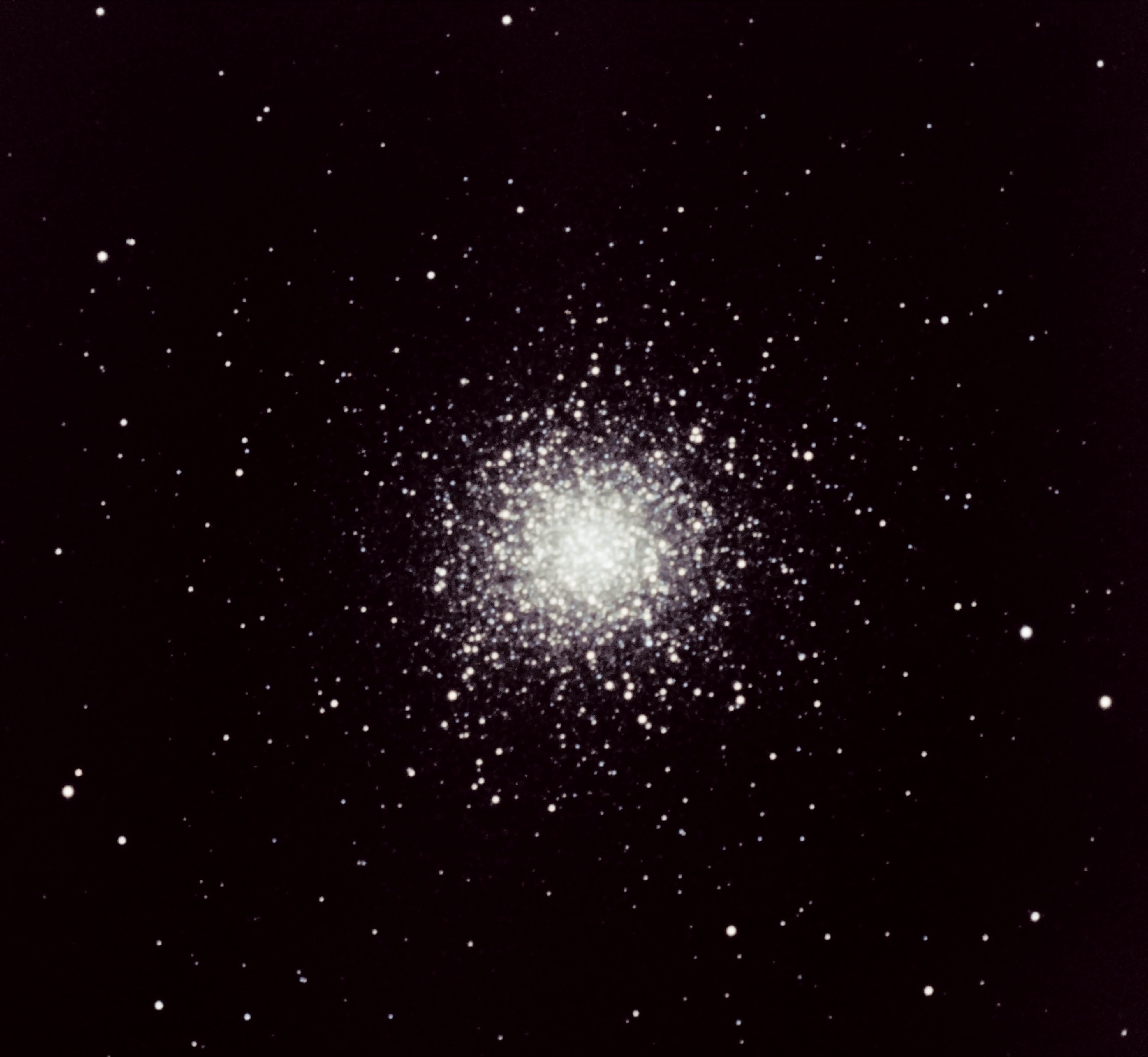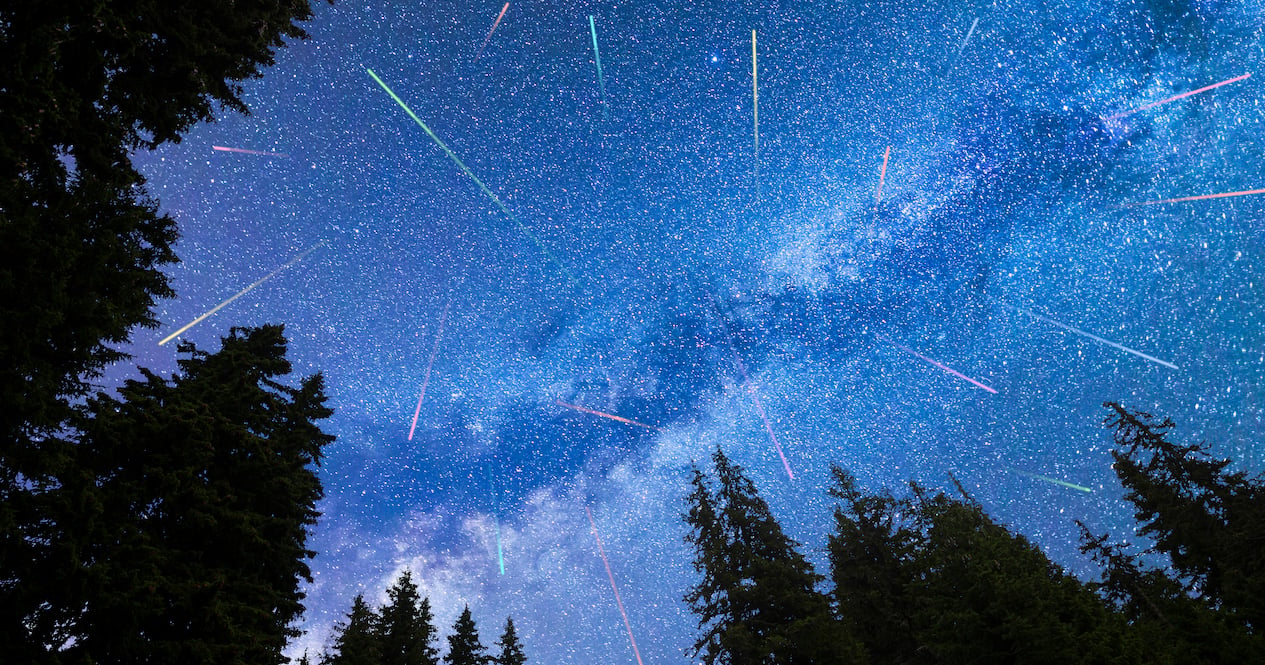Science
NASA UFO Report: What the UAP Study Does and Doesn’t Say

The role was created in response to the recommendations of a report that found the agency could do more to collect and interpret data on unidentified anomalous phenomena.
Pledging a new, transparent, scientifically rigorous look at U.F.O.s, NASA on Thursday said it had appointed a director of research on the topic — and then kept the name of the director a secret for about seven hours.
The new position is part of NASA’s response to recommendations made by an independent study team that the agency had convened. The panel looked at how to better gather and study information about “unidentified anomalous phenomena,” or U.A.P. — the modern term for U.F.O.s.
The panel’s report, released on Thursday, did not attempt to provide a definitive answer to whether galaxy-trotting extraterrestrials are zipping through Earth’s skies. But it does propose a bigger role for NASA in tackling the question.
“NASA will do this transparently,” Bill Nelson, the NASA administrator, said during a news conference on Thursday morning at the agency’s headquarters in Washington, D.C., discussing the report.
During the news conference, Mr. Nelson first talked about NASA’s Perseverance rover on Mars, which is collecting rock samples that might contain hints of life that lived there several billion years ago. He then turned to the James Webb Space Telescope, which is studying planets around distant stars for clues that they may be habitable or even inhabited by life.
The U.A.P. work, he said, follows a similar yearning for learning about the possibilities of life elsewhere in the universe. “This is the first time that NASA has taken concrete action to seriously look into U.A.P.,” Mr. Nelson said.
Nicola Fox, the associate administrator for NASA’s science mission directorate, said the person serving as the new director of U.A.P. research had been in that role “for a while now,” but declined to identify him. ”We will not give his name out,” she said.
On Thursday evening, the agency identified the director as Mark McInerney in an updated news release. He previously served as NASA’s liaison with the Defense Department for U.A.P. issues. In the news release, NASA said he had also worked in various positions at NASA’s Goddard Space Flight Center in Maryland, the National Oceanic and Atmospheric Administration and the National Hurricane Center.
In a post on X, the social network formerly known as Twitter, Dr. Fox wrote, “As we continue to digest the study team’s report and findings, please treat him with respect in this pivotal role to help us better scientifically understand U.A.P.”
NASA officials said that part of the reason for initially keeping Mr. McInerney’s identity secret was the harassment experienced during the period of the study by some of the 16 members of the independent panel, who included university professors, space industry officials and a science journalist.
“Some of them actually rose to actual threats,” said Daniel Evans, assistant deputy associate administrator for research in NASA’s science mission directorate. “And yes, that’s in part why we are not splashing the name of our new director out there, because science needs to be free.”
The federal government’s knowledge of U.A.P.s has recently been the subject of proposed federal legislation. In a House oversight subcommittee hearing in July, lawmakers quizzed a former intelligence official who claimed knowledge of a government cover-up of extraterrestrial technology.
U.A.P.s often turn out to be innocuous objects, like weather balloons. Most experts consider alien spacecraft to be an unlikely explanation for any of the events. But it is possible that some of what has been observed could be as-yet-undiscovered atmospheric phenomena or tests of advanced weapon systems.
“One of the main goals of what we’re trying to do here today is to move conjecture and conspiracy towards science and sanity,” Dr. Evans said. “And you do that with data.”

The panel recommends that NASA use its Earth-observing instruments to collect environmental data coinciding with U.A.P. reports and enlist members of the public to send in a broader swath of observations, perhaps through a smartphone app.
“It always comes back to the data you feed into your analysis,” said David Spergel, an astrophysicist who is president of the Simons Foundation and served as the chair of the U.A.P. panel. “If you don’t have good data, you’re not going to learn things.”
Smartphones can take sharp images, note precise locations, magnetic fields and record sounds. “There’s a wealth of data that a cellphone takes,” Dr. Spergel said. “If you see something you don’t understand, collect data. We aggregate the data and we learn from it.”
Broader collection of data could also reduce the stigma and ridicule that many people fear if they talk about something they saw. “Stigma has limited reporting by pilots, both civilian and military,” Dr. Spergel said.
The panel also suggested using sophisticated computer algorithms, including artificial intelligence and machine learning, to look for subtle patterns in U.A.P. reports that may help identify the underlying phenomena.
Some of the questioning veered toward the odd and surreal. One journalist asked about the ufologist who on Tuesday displayed before Mexico’s Congress what he described as two corpses of aliens.
“Has NASA been in touch with the Mexican authorities about the rather sensational revelations earlier this week of two allegedly nonhuman corpses?” the journalist said. “And what, if any, importance do you attach to these discoveries?”
Dr. Spergel replied, “This is something that I know I’ve only seen on Twitter.”
He gave the analogy of the moon rocks that NASA collected during the Apollo moon landings 50 years ago, which are available for study to scientists around the world.
“If you have something strange, make samples available to the world scientific community and we’ll see what’s there,” Dr. Spergel said.
The U.A.P. study was announced in June last year by Thomas Zurbuchen, then the associate administrator of the science mission directorate.
Dr. Zurbuchen said examining U.F.O. reports could be “high-risk, high-impact kind of research,” possibly uncovering some entirely new scientific phenomenon, or possibly coming up with nothing new or interesting at all.
During a public hearing in May, the panel tried to explain some of the material that has fascinated the public. It used some (slightly tricky) high school geometry to explain how the object in one video taken by a Navy plane in 2015, known as “GOFAST,” was not moving quickly but at just 40 miles per hour by illustrating how the vantage point on an object could be a visual trick.

Science
Asteroid Apophis will visit Earth in 2029, and this European satellite will be along for the ride

The European Space Agency is fast-tracking a new mission called Ramses, which will fly to near-Earth asteroid 99942 Apophis and join the space rock in 2029 when it comes very close to our planet — closer even than the region where geosynchronous satellites sit.
Ramses is short for Rapid Apophis Mission for Space Safety and, as its name suggests, is the next phase in humanity’s efforts to learn more about near-Earth asteroids (NEOs) and how we might deflect them should one ever be discovered on a collision course with planet Earth.
In order to launch in time to rendezvous with Apophis in February 2029, scientists at the European Space Agency have been given permission to start planning Ramses even before the multinational space agency officially adopts the mission. The sanctioning and appropriation of funding for the Ramses mission will hopefully take place at ESA’s Ministerial Council meeting (involving representatives from each of ESA’s member states) in November of 2025. To arrive at Apophis in February 2029, launch would have to take place in April 2028, the agency says.
This is a big deal because large asteroids don’t come this close to Earth very often. It is thus scientifically precious that, on April 13, 2029, Apophis will pass within 19,794 miles (31,860 kilometers) of Earth. For comparison, geosynchronous orbit is 22,236 miles (35,786 km) above Earth’s surface. Such close fly-bys by asteroids hundreds of meters across (Apophis is about 1,230 feet, or 375 meters, across) only occur on average once every 5,000 to 10,000 years. Miss this one, and we’ve got a long time to wait for the next.
When Apophis was discovered in 2004, it was for a short time the most dangerous asteroid known, being classified as having the potential to impact with Earth possibly in 2029, 2036, or 2068. Should an asteroid of its size strike Earth, it could gouge out a crater several kilometers across and devastate a country with shock waves, flash heating and earth tremors. If it crashed down in the ocean, it could send a towering tsunami to devastate coastlines in multiple countries.
Over time, as our knowledge of Apophis’ orbit became more refined, however, the risk of impact greatly went down. Radar observations of the asteroid in March of 2021 reduced the uncertainty in Apophis’ orbit from hundreds of kilometers to just a few kilometers, finally removing any lingering worries about an impact — at least for the next 100 years. (Beyond 100 years, asteroid orbits can become too unpredictable to plot with any accuracy, but there’s currently no suggestion that an impact will occur after 100 years.) So, Earth is expected to be perfectly safe in 2029 when Apophis comes through. Still, scientists want to see how Apophis responds by coming so close to Earth and entering our planet’s gravitational field.
“There is still so much we have yet to learn about asteroids but, until now, we have had to travel deep into the solar system to study them and perform experiments ourselves to interact with their surface,” said Patrick Michel, who is the Director of Research at CNRS at Observatoire de la Côte d’Azur in Nice, France, in a statement. “Nature is bringing one to us and conducting the experiment itself. All we need to do is watch as Apophis is stretched and squeezed by strong tidal forces that may trigger landslides and other disturbances and reveal new material from beneath the surface.”
By arriving at Apophis before the asteroid’s close encounter with Earth, and sticking with it throughout the flyby and beyond, Ramses will be in prime position to conduct before-and-after surveys to see how Apophis reacts to Earth. By looking for disturbances Earth’s gravitational tidal forces trigger on the asteroid’s surface, Ramses will be able to learn about Apophis’ internal structure, density, porosity and composition, all of which are characteristics that we would need to first understand before considering how best to deflect a similar asteroid were one ever found to be on a collision course with our world.
Besides assisting in protecting Earth, learning about Apophis will give scientists further insights into how similar asteroids formed in the early solar system, and, in the process, how planets (including Earth) formed out of the same material.
One way we already know Earth will affect Apophis is by changing its orbit. Currently, Apophis is categorized as an Aten-type asteroid, which is what we call the class of near-Earth objects that have a shorter orbit around the sun than Earth does. Apophis currently gets as far as 0.92 astronomical units (137.6 million km, or 85.5 million miles) from the sun. However, our planet will give Apophis a gravitational nudge that will enlarge its orbit to 1.1 astronomical units (164.6 million km, or 102 million miles), such that its orbital period becomes longer than Earth’s.
It will then be classed as an Apollo-type asteroid.
Ramses won’t be alone in tracking Apophis. NASA has repurposed their OSIRIS-REx mission, which returned a sample from another near-Earth asteroid, 101955 Bennu, in 2023. However, the spacecraft, renamed OSIRIS-APEX (Apophis Explorer), won’t arrive at the asteroid until April 23, 2029, ten days after the close encounter with Earth. OSIRIS-APEX will initially perform a flyby of Apophis at a distance of about 2,500 miles (4,000 km) from the object, then return in June that year to settle into orbit around Apophis for an 18-month mission.
Related Stories:
Furthermore, the European Space Agency still plans on launching its Hera spacecraft in October 2024 to follow-up on the DART mission to the double asteroid Didymos and Dimorphos. DART impacted the latter in a test of kinetic impactor capabilities for potentially changing a hazardous asteroid’s orbit around our planet. Hera will survey the binary asteroid system and observe the crater made by DART’s sacrifice to gain a better understanding of Dimorphos’ structure and composition post-impact, so that we can place the results in context.
The more near-Earth asteroids like Dimorphos and Apophis that we study, the greater that context becomes. Perhaps, one day, the understanding that we have gained from these missions will indeed save our planet.

Science
McMaster Astronomy grad student takes a star turn in Killarney Provincial Park

Astronomy PhD candidate Veronika Dornan served as the astronomer in residence at Killarney Provincial Park. She’ll be back again in October when the nights are longer (and bug free). Dornan has delivered dozens of talks and shows at the W.J. McCallion Planetarium and in the community. (Photos by Veronika Dornan)
BY Jay Robb, Faculty of Science
July 16, 2024
Veronika Dornan followed up the April 8 total solar eclipse with another awe-inspiring celestial moment.
This time, the astronomy PhD candidate wasn’t cheering alongside thousands of people at McMaster — she was alone with a telescope in the heart of Killarney Provincial Park just before midnight.
Dornan had the park’s telescope pointed at one of the hundreds of globular star clusters that make up the Milky Way. She was seeing light from thousands of stars that had travelled more than 10,000 years to reach the Earth.
This time there was no cheering: All she could say was a quiet “wow”.
Dornan drove five hours north to spend a week at Killarney Park as the astronomer in residence. part of an outreach program run by the park in collaboration with the Allan I. Carswell Observatory at York University.
Dornan applied because the program combines her two favourite things — astronomy and the great outdoors. While she’s a lifelong camper, hiker and canoeist, it was her first trip to Killarney.
Bruce Waters, who’s taught astronomy to the public since 1981 and co-founded Stars over Killarney, warned Dornan that once she went to the park, she wouldn’t want to go anywhere else.
The park lived up to the hype. Everywhere she looked was like a painting, something “a certain Group of Seven had already thought many times over.”
She spent her days hiking the Granite Ridge, Crack and Chikanishing trails and kayaking on George Lake. At night, she went stargazing with campers — or at least tried to. The weather didn’t cooperate most evenings — instead of looking through the park’s two domed telescopes, Dornan improvised and gave talks in the amphitheatre beneath cloudy skies.
Dornan has delivered dozens of talks over the years in McMaster’s W.J. McCallion Planetarium and out in the community, but “it’s a bit more complicated when you’re talking about the stars while at the same time fighting for your life against swarms of bugs.”
When the campers called it a night and the clouds parted, Dornan spent hours observing the stars. “I seriously messed up my sleep schedule.”
She also gave astrophotography a try during her residency, capturing images of the Ring Nebula and the Great Hercules Cluster.

“People assume astronomers take their own photos. I needed quite a lot of guidance for how to take the images. It took a while to fiddle with the image properties, but I got my images.”
Dornan’s been invited back for another week-long residency in bug-free October, when longer nights offer more opportunities to explore and photograph the final frontier.
She’s aiming to defend her PhD thesis early next summer, then build a career that continues to combine research and outreach.
“Research leads to new discoveries which gives you exciting things to talk about. And if you’re not connecting with the public then what’s the point of doing research?”

Science
Where in Vancouver to see the ‘best meteor shower of the year’

Eyes to the skies, Vancouver, because between now and September 1st, stargazers can witness the ‘best meteor shower of the year’ according to NASA.
Known for its “long wakes of light and colour,” the Perseid Meteor Shower will peak on August 12th, 2024 – so consider this list a great place to start if you’re in search of a prime stargazing spots!
Grab your lawn chairs and blankets, and seek as little light pollution as possible. Here are some ideal stargazing spots to check out in and around Vancouver this summer.
Recent Posts:
This island with clear waters has one of the prettiest towns in BC
10 beautiful lake towns to visit in BC this summer
Wreck Beach
If you’re willing to brave the stairs and the regulars, it doesn’t get much better than Wreck Beach for watching the skies – for both sunsets and stargazing. The west-facing views practically eliminate immediate distractions from the city lights.
Spanish Banks Park
Spanish Banks is the perfect mixture of convenience and quality. Its location offers unobstructed views of the skies above, and it’s far enough away from downtown to mitigate some of the light pollution.
Burnaby Mountain Park
If it’s good enough for a university observatory, it’s good enough for us. Pretty much anywhere on Burnaby Mountain will offer tremendous viewpoints, but the higher you get the better (safely).
Porteau Cove
A short drive from Vancouver gets you incredible views of the Howe Sound from directly on the water. And naturally, its distance from any nearby community makes it a prime spot for stargazing.
Cypress Mountain
In addition to having one of the best viewpoints in Vancouver period, Cypress Mountain (and the road up to it) is also a great place to watch the sky. For a double-whammy, we say that you come around sunset, then hang out while the sky gets dark. Sure, it might take a few hours, but the view is worth it.
So there you have it, stargazers! Get ready to witness a dazzling show this summer.

-

 Health24 hours ago
Health24 hours agoEssential Keto Cookbook Digital Plus Bonuses ($9.95) (PPU: 50232)
-

 News22 hours ago
News22 hours agoJudge questions restrictions on booster payments to athletes in $2.78B NCAA settlement
-

 Business12 hours ago
Business12 hours agoJapanese owner of 7-Eleven Seven & i Holdings rejects Couche-Tard takeover offer
-

 Sports20 hours ago
Sports20 hours agoUS Open: Jessica Pegula beats Karolina Muchova and will face Aryna Sabalenka in the women’s final
-

 Economy10 hours ago
Economy10 hours agoRecent immigrants shut out of strong wage growth as unemployment rises in Canada
-

 Health21 hours ago
Health21 hours agoLP02-CB – Learn2Lick
-

 Economy16 hours ago
Economy16 hours agoStatistics Canada to release August jobs report today amid labour market slowdown
-

 Real eState10 hours ago
Real eState10 hours agoMontreal home sales, prices rise in August: real estate board



















